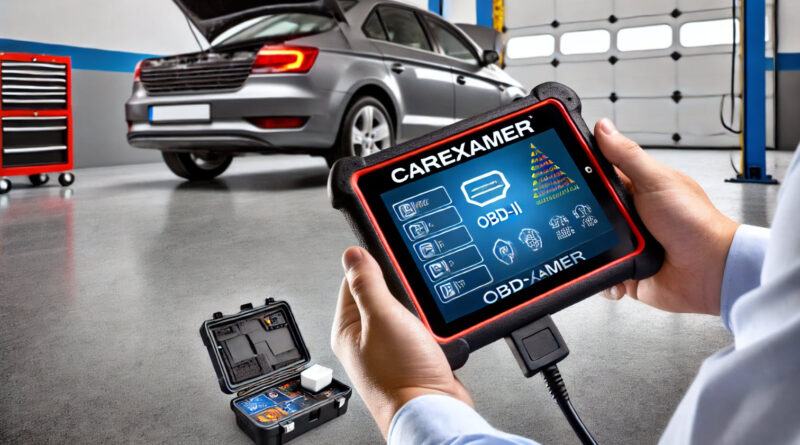What Are Engine Codes, DTC Codes or OBD Codes and How Do I Read Them?
In this article, we’ll explain what are engine codes, DTC Codes or OBD Codes and how do I Read Them diagnose your car’s problems. Understanding these codes and knowing how to read them can save you time, money, and frustration. In this article, we’ll explain what these codes are and how you can read them to diagnose your car’s problems. Modern vehicles are equipped with advanced computer systems that monitor and manage various engine functions. When something goes wrong, your car’s computer generates a series of codes that can help identify the issue. These codes are known as Engine Codes, Diagnostic Trouble Codes (DTCs), and On-Board Diagnostics (OBD) codes.
What Are Engine Codes, DTC Codes, and OBD Codes?
Engine Codes are a type of Diagnostic Trouble Code (DTC) that specifically relate to engine and emission systems. When your car’s computer detects a problem with the engine, it triggers an engine code. These codes are typically accessed using an OBD (On-Board Diagnostics) scanner.
DTC Codes (Diagnostic Trouble Codes) are standardized codes used by automotive professionals and OBD systems to identify specific issues within a vehicle. These codes are stored in your car’s computer system and correspond to various components and functions, such as the engine, transmission, brakes, and emissions systems.
OBD Codes are part of the On-Board Diagnostics system, which is found in almost all modern vehicles. OBD-II (the second generation of OBD systems) is the standard in vehicles manufactured since the mid-1990s. OBD codes are a subset of DTC codes that can be read with an OBD scanner to determine the cause of a problem indicated by the check engine light or other warning lights on your dashboard.
How to Read Engine, DTC, and OBD Codes
Reading engine, DTC, and OBD codes is a straightforward process if you have the right tools. Here’s how to do it:
1. Get an OBD-II Scanner
To read these codes, you’ll need an OBD-II scanner or code reader. These devices plug into your car’s OBD port and retrieve the stored codes. OBD-II scanners can range from basic, inexpensive models to more advanced devices with additional features like live data monitoring and code interpretation.
2. Locate the OBD-II Port
The OBD-II port is typically located under the dashboard on the driver’s side. It’s a 16-pin connector that is easily accessible in most vehicles. If you’re having trouble finding it, check your vehicle’s manual for the exact location.
3. Plug in the Scanner
Once you’ve located the OBD-II port, plug the scanner into the port. Turn on your car’s ignition (you don’t need to start the engine, just switch it to the “on” position).
4. Retrieve the Codes
Follow the instructions on your OBD-II scanner to retrieve the codes. The scanner will communicate with your car’s computer and display any stored DTC or OBD codes. Some scanners will also provide a brief description of the code, but you may need to look up the specific meaning of the code in a manual or online database.
5. Interpret the Codes
DTC and OBD codes are typically a series of five characters, combining letters and numbers. Here’s how to interpret a typical code:
- The first character (a letter) indicates the system related to the code. For example, “P” stands for Powertrain (engine and transmission), “B” stands for Body, “C” stands for Chassis, and “U” stands for Network communication issues.
- The second character (a digit) indicates whether the code is generic (applicable to all vehicles) or manufacturer-specific. “0” indicates a generic code, while “1” indicates a manufacturer-specific code.
- The third character (a digit) refers to the specific subsystem involved, such as fuel or air metering.
- The last two characters (digits) pinpoint the exact issue within the subsystem.
For example, a code like P0301 would break down as follows:
- P = Powertrain (engine-related)
- 0 = Generic code
- 3 = Misfire detection
- 01 = Cylinder 1 misfire detected
6. Research and Resolve the Issue
Once you have the code, you can look up its meaning in an online database, your car’s repair manual, or through resources provided by your OBD scanner. Understanding the code helps you determine the severity of the issue and whether you can fix it yourself or need professional assistance.
Common DTC and OBD Codes
Here are a few common OBD-II codes you might encounter:
- P0171/P0174: System Too Lean (Bank 1/Bank 2) – Indicates that the engine is running with too much air and not enough fuel.
- P0300: Random/Multiple Cylinder Misfire Detected – Indicates that one or more cylinders are misfiring.
- P0420: Catalyst System Efficiency Below Threshold (Bank 1) – Often related to issues with the catalytic converter.
- P0455: Evaporative Emission System Leak Detected (Large Leak) – Indicates a large leak in the EVAP system, which controls fuel vapors.
Why Reading These Codes Is Important
Understanding and reading these codes can help you:
- Diagnose Problems Early: Identifying issues before they become serious can save you from costly repairs.
- Avoid Unnecessary Repairs: Knowing the exact problem can prevent you from spending money on unnecessary repairs.
- Improve Vehicle Performance: Addressing issues promptly helps maintain your vehicle’s performance and efficiency.
- Stay Safe: Some codes may indicate serious issues that could affect your safety on the road. Addressing these immediately is crucial.
Engine codes, DTC codes, and OBD codes are invaluable tools in modern vehicle diagnostics. By learning how to read and interpret these codes, you can take control of your vehicle’s maintenance and ensure that any problems are addressed promptly. Whether you’re a DIY enthusiast or just want to be more informed about your vehicle, understanding these codes is a key step in keeping your car running smoothly.
Buying a used VW. Buying used vauxhall, BMW, Jaguar, Ford, Volvo, Range rover, Bentley, Aston Martin, Porsche, Ferrari, Lamborghini, Maserati, Hyundai, Tesla, Honda, Pagani

